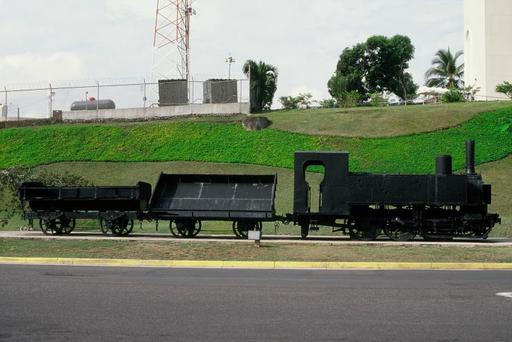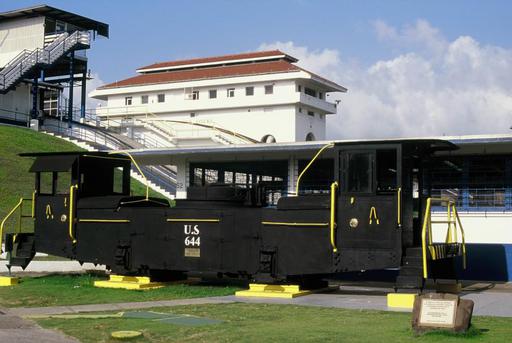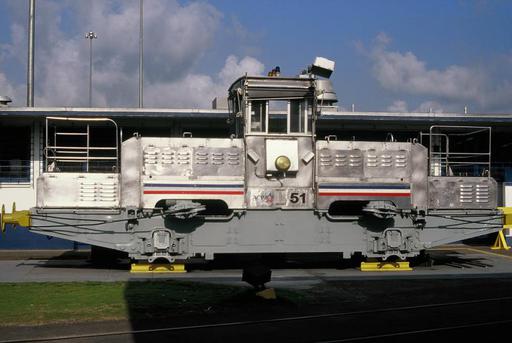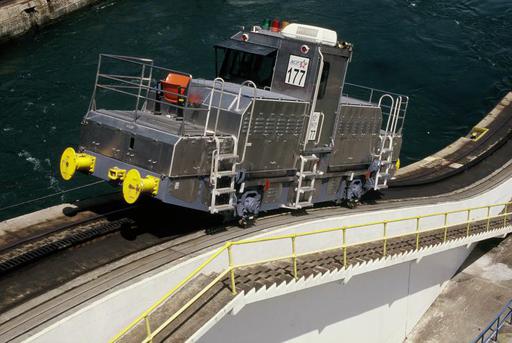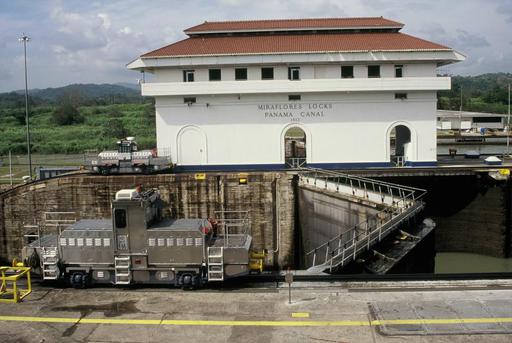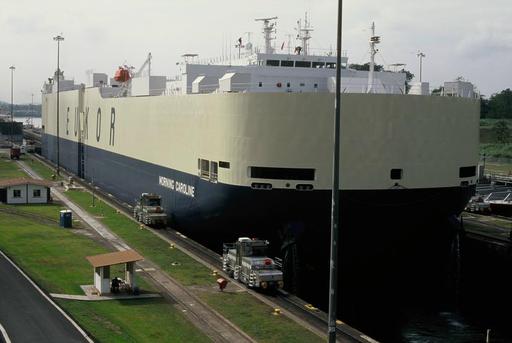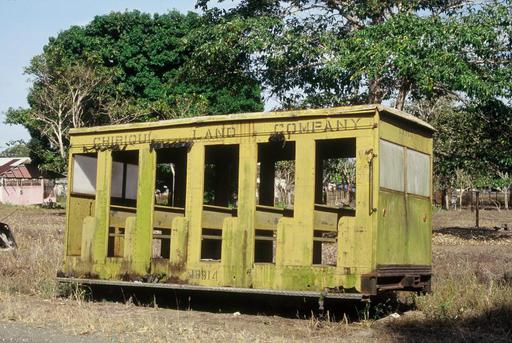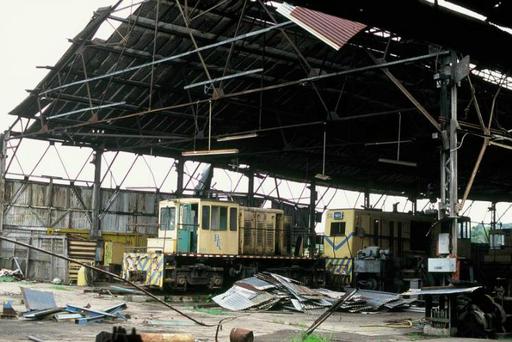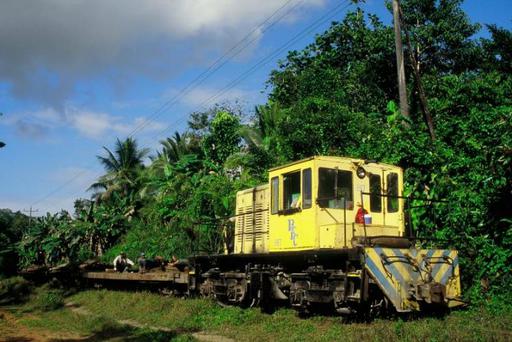Panama
Country and History
Panama was until 1821 part of the Spanish colonies. Then it became part of the Colombian empire under Simón Bolivar. In 1903 Panama separated itself from Colombia. Thereafter the Hay-Bunau-Varilla treaty with the USA was signed which permitted to construct the Panama Canal and put the adjoining areas under US American control. 1977 the Torrijos-Carter treaty was signed which was to transfer the Canal zone to Panama by the end of 1999 and which then after an intermediate period in 1989 with a dictator and his dismissal by the USA took place. In a popular vote 2006 the modernisation project of the canal was accepted.
The country language is Spanish, the capital Panama City. Panama is a presidential republic and has a surface of 75'500 square kilometres. The country has 3'200'000 inhabitants, the population density is 42,6 per square kilometre. 50% live in cities. The inhabitants call themselves Panamanians, 60 pct.. are mestizos, 15 % black and mulattos, 13% Creoles (whites), 8,3 pct. indigenous and 4 pct. Asiatic. 80 pct. are catholics, 15 pct. protestants, in addition there are jews and moslems. Currency is the Balboa (PAB) and the USD in relation 1:1. Panama forms the connexion from Central America to South America. In the West lies Costa Rica, in the East Colombia.
The main source of income is the Panama Canal. Originally the country had up to 450 kilometres of rail lines, but today only the Panama Canal Railway of 76 km is operating.
The Railways
Principally, there are today two operating railway systems:
- The towing railway (ships towing railway)
- The railway from Balboa to Colón
In addition, there was a large network of narrow gauge railways, amongst them in Chiriquí province in the west of Panama El Ferrocarril de Chiriquí. The existing information on these railways is scarce and not very accurate. There are only few photographs of these railways . Two of them can be found on the pages of a cultural organisation in Chiriquí. Thanks to the research of Samuel Rachdi from the Fahrplancenter in Steinen/Switzerland much interesting material has come up. All these railways are closed and dismantled.
Tramways, Light Rail and the Metro
Information on the Tramways of Panama can be found on Allen Morrison's excellent and richly illustrated web page (in English) under http://www.tramz.com/co/pa/pa.html. Electric tramways existed only in Panama City (two consequent systems) and with a suburban line to Sabanas. Stock consisted of two axle tramcars with trolley poles for power collection. In Colón there were plans for a battery operated tramway which however never were realised.
In 2000 plans came up for a Light Rail line in Panama City, which however never were realised.
Of recent, credits for the construction of a metro in Panama City were arranged. The first line goes from The December 24 in the East of the city to May 5 Square in the centre of the city, has a length of 14,5 Kilometres, 21 stations, and will cost USD550 Millions. Line 2 will have 21 Kilometres and cost USD1 Billion. The exiting 80 bus lines will be adapted to the Metro. The first line shall open in 3 years time. Six consortia will now present proposals, and the metro of Medellin will give support in technical questions (state of 01.01.10).
The locks
The Panama Canal has a length of 82 Kilometres and connects the Atlantic at Colón with the Pacific at Balboa near Panama City. A ship requires about 9 hours for the entire passage. On the Atlantic side there is one lock, the triple Gatún lock which leads to lake Gatún, an artificial lake formed by a dam, and on the Pacific side there are two locks, the single Pedro Miguel lock leading to lake Miraflores and the double Miraflores lock. The locks can take ships up to 106 feet wide and 965 feet long. All locks have one lock in each direction.
The towing railway
In order to tow the ships through the locks on both shores a towing railway was built. In order to overcome the large height differences. This was realised in the form of a rack railway of type Riggenbach with a gauge of 1524 Millimetres and a maximum incline of 50 pct. The first 67 locomotives, called Mulas (Mules) were delivered in 1912 by General Electric in the USA. With a distance between wheels of only 3657 Millimetres, there are two motors on the overhanging ends which via spur gear transmissions drive rack and adhesion sections. The current is delivered by two subterranean Conduit power rails. Motor power is 150 HP, and the type of current three phase at 220 Volt and 25 Hertz. It is of interest to note that also during the journey or by stopped ship's machine, with built in cable windlasses, the cables drawing the ships, the ship can be directed by retracting or releasing the cable. To move the ships, up to eight locomotives are required. The empty return journey takes place on a parallel track which is only equipped with rack at the lock gates. The technical data of the locomotives: Type (Switzerland) HGe 2/2, total length 9617 Millimetres, total distance between wheels 3657 Millimetres, diameter of running wheel 841,4 Millimetres, maximum return speed 8 Kilometres/hour, towing power 111,07 Kilonewtons at (maximum) 3,2 Kilometres per hour, hourly tractive power output at the wheel rim 11,4 tons, gross weight 45 tons. All locomotives (except one for the museum) have been scrapped. A Kilonewton corresponds to the power required to accelerate a body of mass of 1 Kilogram in 1 Second to 1 Metre/Second.
One further towing locomotive was delivered by R.G. LeTourneau, Inc., but is out of service.
The second generation of towing locomotives started working between 1960 and 1965. The 57 new locomotives were equipped with improvements. Besides a central operating position they are equipped with two step gears with a detachable adhesion drive and have a power of 170 HP each. They can be adapted and operate thus with 1800/1200 turns or 600 turns per minute. This gives a total of 1/2/3 respectively 3/6/9 miles per hour. The smaller speeds are only used when towing a ship, the larger ones for the empty return journey. With the new locomotives current provision was changed to three phase current of 440 Volt/60 Hertz. Manufacturer under the supervision of Mitsubishi (Japan, rack gear) was Toyo Denki Kaisha, also of Japan. The technical data: total length 10382 Millimetres, total distance between axles 4572 Millimetres, diameter of the running wheel 841,4 Millimetres, maximum return speed 14.4 Kilometres/Hour, towing power of 311 Kilonewtons at maximum 4,8 Kilometres/Hour, hourly tractive power output at the wheel rim 27 tons, gross weight 55 tons. With additional deliveries to cope with a larger number of ship's passages a total of 68 locomotives were built.
The ships became all the time bigger and of more weight. So it was decided in 1999, when the canal was handed over by the US Americans to Panama, in the context of an extensive modernisation program to purchase new locomotives with a higher power and higher speed. Manufacturers were under the overall management of Mitsubishi Corp. Ltd. again Mitsubishi Heavy Industries Ltd. (Japan, rack drive), Toyo Electric Mfg. Co. Ltd. (Japan, electrical equipment and cable windlasses) and Kawasaki Heavy Industries Ltd. (Japan, bodywork). Anteceding the order was an international call for offers of which also SLM, Swiss Locomotive and Machine factory of Winterthur, branch leader of rack railways, participated, this before the take over of this business by Stadler Rail of Bussnang, and together with Adtranz for the electric equipment. This offer was handed in by the Japanese firm of Hitachi, also active in the rack railway business and which amongst others supplied the locomotives for the Brasilian rack incline between Paranapiacaba and Santos, inclusive of the racks. The SLM offer was, however, not successful as it was preferred to use the same suppliers as in 1960 with whom past experience was very good. Soon afterwards Hitachi ceased the rack railways business.
Of the 34 locomotives ordered first 16 will be assembled in Panama. It is hoped therewith to create an increased Know-how for the maintenance of the locomotives. The locomotives have a 50 pct. higher motor performance and considerably higher return speeds of 16 Kilometres/Hour which increases the transport performance of the canal. The technical data: Three phase current of 480 Volt, climbing speed of 8 Kilometres per hour at 50 pct. incline, maximum return speed 16 Kilometres/hour, length 10600 Millimetres, width 3192 Millimetres, height 3880 Millimetres, towing power 311,8 Kilonewtons at 4,8 Kilometres per hour, or 178,2 Kilonewtons at maximum speed of 8 Kilometres/Hour. The locomotives have two motors of 290 HP each and a total weight of 55 tons. Current collection continues as before with an underground third rail (Conduit system). Each locomotive has two windlasses of 156 Kilonewtons performance.
In the course of modernisation the rails of 90 lb were replaced with rails of 105 lb and the rails continuously thermally welded. But now all the rails shall be replaced, as the locomotives become heavier. - At the end of the tracks there are turntables, a total of 5 delivered by the US American firm of Macton, as the locomotives can only operate in one direction. Responsible for this railway is the Panama Canal Co.
For the new to be constructed parallel and wider locks, there will be no locomotive operation, and 13 towing ships with each 2 V-228 12 cylinder diesel engines from General Electric were ordered. The ships will be built in Hong Kong, the designs were prepared in Vancouver.
The railway line from Balboa on the Pacific to Colón on the Atlantic
A long time before the construction of the canal work started on the construction of a railway line from Balboa to Colón. In 1855 the line opened and later even was extended a short bit into the Pacific so that larger ships could reach the wharves. The line has a length of 76 Kilometres, the steepest incline is 1 pct., the track gauge was 1524 Millimetres, and the line was first single track and later doubled. It features a spectacular viaduct and a tunnel. Spectacular is also the crossing of lake Gatún on a dam. After a successful opening the inauguration of the Central Pacific-Union Pacific Railroad in Promontory in the local US state of Utah in 1969 evoked a strong decline, and the line became a loss business. With the start of the construction of a canal without locks by the French the railway was bought up by them and further on served as material transport, construction and workers transport railway. For this purpose steam engines and material transport wagons were purchased. When the US American took over the construction of the canal the rolling stock storage yard was put under water and the rolling stock served as basis for the construction of the Gatún lock. One locomotive and 15 wagons were salvaged , one locomotive and two wagons restored. They stand in front of the visitors centre at the Miraflores lock. The canal actually follows by and large the railway line. With the opening of the canal and specially after the construction of a new road from Atlantic to Pacific the railway lost its income. The infrastructure was slowly but certainly destroyed. Pictures of the rolling stock then used can be found under http://www.czimages.com.
In 1977, under the Carter-Torijos treaty which detached Panama from Colombia, the railway was transferred to the Government of Panama. In 1986 the US American military transport management established a safety study with recommendations for the reconstruction of the railway. Up to 1997 the Government of Panama was unable to provide means for the reconstruction.
With the privatisation of most of the state owned firms, including the railway, a new chance for the reconstruction arose. The Panama Canal Railway Company received the exclusive rights for the railway operation and the necessary reforms. In 1998 a new firm, the Panama Railway Company, a joint firm of the Kansas City Southern, in the USA a class 1 railway, and Mi-Jack Products, north Americas leading intermodal terminal operator, received a concession over 50 years for the reconstruction and the operation of the line. Today the firm of Lanigan Holdings PLC from Romeoville, Illinois, USA, is a new partner. The cost of reconstruction amounted to USD80 Millions. Main business is the container transport, double deck, and for this purpose the height of the tunnel had to be increased. In Colón a free zone has been installed. and in addition a luxurious passenger traffic was installed which is mainly used by travellers between Colón and Panama City. The line is however also used by passengers of the cruise ships as this is the most popular excursion for them. In February 2000 the line reopened for freight transport, in July 2001 for passengers. New track gauge is 1435 Millimetres. Concrete ties are used, and the rails of 136 lb are continuously welded. The line is today singly line with passing loops at strategic crossing points.
Rolling stock consists of ten General Motors EMD F40PH Nos. 1856 to 1865 which were purchased from Amtrak. They have a performance of 3250 HP. One locomotive at each end avoids the shunting at the terminal stations: Both locomotives can be operated from each locomotive. In 2008 2 EMD SD40-2 locomotives Nos. 1866 and 1867 and 5 EMD SD60 locomotives Nos. 1868 to 1872 were acquired from the Kansas City Southern Railroad. For service trains a locomotive EMD GP-10 No. 1855 is available. Five luxourisly equipped passenger cars with space for 50 passengers and an also completely overhauled Southern Pacific Railroad dome car of 1938 with space for 60 passengers are used. Single fare is USD22 for adults, USD11 for children from 2 to 12 years of age and USD15 for retired passengers. The train leaves usually at 7.15 hours in the morning from Panama City to Colón and at 17 15 hours from Colón to Panama City. Running time is one hour.
For goods traffic there are 22 articulated 5-well double deckers, built by the firm of Gunderson. Six flat cars and ten hopper cars serve for track maintenance. At both terminals there are cranes and container gantries. At both ends of the line there are intermodal terminals and one passenger station each. The line is entirely duty free so that the containers can be moved without customs problems. The electronic line supervision uses most modern US American techniques. Level crossings are supervised by light signals. Communication uses UHVA High Frequency equipment, and the the computers are supervised by a computer system in each position.
Ferrocarril Nacional de Chiriquí (not in service anymore)
On the basis of a concession by the Republic of Panama dated 19th February 1913 the firm of R.W.Hebard (Heabord according to other sources) and Co. carried out studies for the construction of a railway through the province of Chiriquí and from there to the Caribbean coast. In 1914 the Minister for Development of the Government of Panama conceded this firm the right to construct the planned railway, and in 1914 work started on four railway lines:
- Ciudad David - Pedregal, 6,5 Kilometres, opened at the end of 1916
- Ciudad David - La Concepción 29 Kilometres, opened in February 1916
- Ciudad David - Boquete 45,1 Kilometres, opened on 15th April 1916
- Dolega - Potrerillos 12,1 Kilometres, opened on 15th April 1916
The official opening ceremony for the Chiriquí Nacional Railway System took place in the presence of the president of Panama, Dr. Belisario Porras on the 22nd April 1916 with strong participation of the inhabitants and of guests from Panama and other countries.
In spite of the fact that the railway bore the name of "National Railway of Chiriquí" it was a firm under private right and without financial support of the state when service started. Only 5 pct. of the shares were owned by the Republic of Panama, 95 pct. were owned by the National City Bank of New York.
In 1924 the government of Panama granted the concession for the extension of the railway line from La Concepción to Puerto Armuelles. Work on this line of 51 Kilometres started, however, only in October 1926, and at the end of 1928 regular traffic started.
At this time again there was a discussion about the extension of the line from Boquete to Almirante on the Caribbean coast, but this was never built.
Between 1926 and 1931 a new and much larger station and new workshops were constructed at Ciudad David.
By decree dated 10th February 1945 the FNC (Ferrocarril Nacional de Chiriquí) was converted to a parastatal firm after all the remaining shares were purchased and divided between the Republic of Panama and the Province of Chiriquí.
In 1947 the branch line to San Andrés opened, and thereby the system, with all the loading tracks etc., reached a length of almost 200 Kilometres.
Already in the twenties of the last century the Edwards Rail Car Company, founded in 1921, delivered ten diesel motor coaches which supported the locomotives in passenger traffic. Passenger traffic was for the FNC always more important than goods traffic.
The railway lines all had a track gauge of 3 feet (914 mm). The original rails had a weight per metre of 27,3 Kilogram per Metre which were replaced from 1945 to 1965 by rails of 34,7 Kilogram/Metre. The sleepers, originally of various types of wood, were during the years replaced by impregnated hard wood sleepers. Up to the 1960s the relatively low ballast bed was well maintained, but sections of tracks which lay in walking paths, streets or squares were never ballasted, the underground was only considerably compressed. The largest inclination was 3 pct and the minimal curve radius 146 Metres.
The rolling stock at the beginning of services consisted of 12 steam engines, all from the USA, presumably from Baldwin. As the goods traffic was always very low, the steam engine roaster was reduced when the first diesel motor coach was delivered.
In 1954 the railway had the following rolling stock: 6 steam engines (two in daily use), 2 diesel locomotives, 2 petrol locomotives, 14 diesel motor coaches, 10 passenger coaches and 145 goods wagons.
In that year 690'000 passengers and 35'670 tons of goods were transported.
On the 1st of August 1969 FNC was definitively taken over by the state, as road traffic started to become a serious competition. At that moment the railway had only 2560 Balboas in its cash box. The government increased this to more than 100'000 Balboas. With this, the salaries of the staff were increased to the average national level. In addition the bridges and certain sections of the line where there had been several derailments since 1967 had to be repaired which work was started immediately. In 1971 operations were again without problems. At the end of 1970 the section of the Panamericana road between Ciudad David and Puerto Armuelles was opened.
In 1970, the railway owned 6 steam engines (rarely used), 6 diesel locomotives, 14 diesel motor coaches, 36 passenger coaches and 427 goods wagons. In that same year 543'551 passengers, 8'061 tons of goods and 10'194'873 banana stalks were transported, the goods and banana trains worked 11'800 Kilometres and the passenger trains (motor coaches and locomotive drawn trains) 183'299 Kilometres.
In 1973 446'282 passengers were transported, 3'344 tons of goods and 10'890'808 banana stalks were transported.
At the end of the seventies (between 1977 and 1979) passenger transport on most of the lines out of Ciudad David was stopped as private bus lines were competing strongly, and the goods traffic suffered from the competition by lorries and the recession of the banana transport in the immediate neighbourhood of the FNC lines. As railway transport offered lower fares than the buses, the trains were for many years a welcome way of travelling for the rural population with low incomes. From 1980 on bus transport increased sharply; often the buses operated every 15 to 20 minutes. In 1982 the rail transport was stopped on all lines, except between Ciudad David, La Concepción and Puerto Armuelles, goods trains operated only on demand. Seven motor coaches were still in operating condition, some goods and passenger coaches were sold to the railways of t he United Fruit Company, as well as to the Ferrocarril del Sur in Costa Rica, in this case after adaptation to the track gauge of 1067 mm.
For many years there was a connexion to the Golfito network of the Ferrocarril del Sur in Costa Rica; because of the different track gauges passengers had to change trains at Empalme station (also known as Kilometre 12,7), north of Puerto Armuelles. In 1948 this connexion was daily except Saturday possible, shortly after mid day. Because of the competition of the Panamericana this connexion stopped around 1983, in 1988 the Golfito network was anyway closed for public transport.
In 1986 passenger traffic on the line from La Concepción to Puerto Armuelles was reduced, there were only two motor coaches in each direction, from Concepción and Armuelles each at 08.30 h and 13.30 h, running time was 3 hours, the parallel bus line required 75 minutes and operated every 15 minutes. The lines from Ciudad David to Potrerillo and Boquete and the branch line to San Andrés were closed. Passenger transport still operated until 1988 and was then stopped (the exact date is not known). The regular goods traffic, banana transport, survived only for a short time and was merged with the transport of the United Fruit Company.
At the beginning of the 1990's traffic of the FNC stopped, the infrastructure, however, was not dismantled for a long stretch of time. Level rail crossings were asphalted and station buildings transformed to libraries or schools or private housing, this even without the agreement of the railways, as the railways administration continued to exist. In the late 1990's even the FNC became victim of rail thefts, and at the same time some communities of the region between Dolega and Boquete who did not dispose of strong roads decided that the existing rail alignment and the still intact bridges should be rebuilt to roads. Even in 2002 there existed a project to rebuild the line Puerto Armuelles - Ciudad David - Boquete as a railway and restart passenger operation, but the state government was not convinced about these plans. In 2005 and 2006 former employees of the FNC became once again active; they received in the form of a working contract of 15 months the task to dismantle the remaining tracks of the railway. In a newspaper report it was stated "that the rails could only remain where there were no access paths, and that this made the work of the men very difficult, the pieces of rail had to be carried away over long distances". Per 31st December 2008 the concession of the FNC was extinct and the railways was declared closed by the administration.
Chiriquí Land Company (not in service anymore)
These railways were during their entire existence owned by the United Fruit Company in Boston USA. Around 1900 United Fruit Co. (UFCO) purchased extended grounds in the province of Chiriquí on the Pacific and Bocas del Toro on the Caribbean coast. The first banana plantations were situated right at the coast which allowed the fruit to be carried by ox cart to the ports, but soon the plantations had to be increased and thereby reached further away places.
Still before the First World War UFCO started to construct railways for the banana transport. Exact years of opening are not known, but in a report it is stated that in 1911 the first banana transports to Almirante took place.
The railway network consisted of two parts:
Chiriquí Land Líneas del Sur
This network started in Chiriquí province and partially overlapped the above mentioned FNC. The UFCO tracks of the same gauge of 914 mm reached Puerto Armuelles port even before the FNC. UFCO also owned a through going line of 36 Kilometres to Laurel and Coto in the southernmost part of Costa Rica. In the long term the United Fruit Co. planned a through going railway of 914 mm gauge from New Jersey (south of New York) to Ciudad de Panama of which, however, only the connexion from the Mexican - Guatemalan frontier (Tecún Umán to the port of La Unión in El Salvador was realised.
The rail network in Chiriquí province reached at the end of the 1920's around 165 Kilometres, and in 1953 there were still 147 Kilometres and in 1970 still 140 Kilometres in service. Although principally built for the transport of bananas and plant workers, from the middle of the 1930's on both networks also other goods and passengers were transported. From the 1950's schoolchildren's transport became more important. The southern network owned in 1953 11 diesel electric locomotives, 39 motor coaches of various types (Edwards, Brill and home made), 2 passenger coaches and 561 goods wagons of which only 44 were destined for the public goods transport.
According to the line rails with meter weights of 14,9 and 29,8 were installed, the lines were, if at all, only ballasted with gravel, the permitted maximum speed for locomotive operated trains was around 24 Kilometres/Hour, for motor coaches 35 kilometres per hour.
In Puerto Armuelles, Progreso and La Concepción there were direct connexions to the FNC, and according to the quantity of goods to be transported even through going trains from one to the other railway. Also in passenger transport there shall have been good connexions between the two railways, according to traveller's descriptions of the 1960's. The public passenger and goods transport on these lines ended, according to information from the Ministry of Agriculture of the Republic of Panama in a report from 1973, in 1971; bananas were still being transported up to the beginning of the 1980's on certain sections; in part FNC shall have carried out transports on behalf of UFCO. When exactly United Fruit stopped transport is not known, but it was during the 1980's, whereas according to the Costa Rican Ministery of Finance the track across the frontier and the customs office connected to it was officially closed per 1st May 1988.
Chiriquí Land Líneas del Norte or División Bocas
Even before the construction of the southern network the construction of the first lines in Bocas del Toro province began, and the first line went from the port of Almirante and through the town of Almirante to the rural areas behind it. Rapidly the rail network developed in the direction of Guabito, Changuinola and the Rio (river) Sixaola at the frontier to Costa Rica. The "Panama Illness" of the banana plants, which lets the roots not take up any water and thereby letting the plants die, resulted in a strong reduction of banana production in this region from 1929 onwards which forced United Fruit to plant bananas on the other side of the Rio Sixaola in Costa Rica, for which a large steel grid bridge crossing the river and 8 Kilometres of main line in Costa Rica were built. With the extension of banana production in Costa Rica many mostly short branch lines were built to the fincas (plantations). From the middle of the 1930's banana plantation in Panama increased again, and further lines along the Rio Sixaola, on the Panamanian side were built, including the construction of a further bridge over the frontier river. In 1951 the network of the Bocas division had a length of 142 Kilometres and owned 1 steam engine, 10 diesel locomotives, 38 motor coaches, 4 passenger coaches and 144 goods wagons. By 1955 the railway had been completely converted to diesel operation and owned then 15 diesel locomotives. On the lines in Costa Rica the very restricted passenger transport ended already in 1956, plantation workers and their families were still being transported. Between Almirante and Changuinola goods and passenger transport was very lively, in 1960 on the line even 502'000 passengers were transported, but on the size of the banana transport there are no exact data, in a typical year 11'000'000 banana stalks shall have been transported.
In the late 1990's goods transport in Costa Rica reduced considerably, and around 1998 inundations had destroyed the line to the bridge and obviously also destabilised the bridge which meant that traffic across the frontier ceased. The upper bridge was already in the late 1960's destroyed by inundations.
The remaining operation continued over the change of the century, and from 2005 onwards the branch lines and from 2008 onwards tracks of the main line were dismantled, but the last trains operated until a few weeks before being dismantled.
Further Railway Projects
In 1920 the Government of Panama let elaborate a project for a railway from Ciudad de Panama through Cocle and Veraguas provinces to Ciudad David, both for the cheap 914 mm gauge as for the 1524 mm wide gauge. It was planned that the Panama Canal Railroad would build and operate the line. But both variants were to expensive for the government and still 40 years should pass before the Panamericana road through the two cities was asphalted and an all year connexion beween them was possible.
New Railway projects
In 2008 the Government of Mexico, Guatemala, El Salvador, Honduras, Nicaragua, Costa Rica and Panama agreed to build a standard gauge railway from Tapachula (Mexico) to Panamá City. This after nearly 20 years of discussions whether the railway schould be built and according to which standards. The FERISTSA (Ferrocarril Internacional del Istmo Centroamericano S.A.) will now prepare the raising finance and the public tendering. When the start of construction will be is open.
Sources:
Hefti, Walter: Zahnradbahnen der Welt, 1971 und Nachtrag dazu, 1971/6, Verlag Birkhäuser, Basel (German).
Wikipedia: Panama
Wikipedia: Panama Canal
Wikipedia: Railway Transport in Panama
Wikipedia: Transort in Panama
Panama Canal Authority (Englisch und Spanisch)
Panama Canal Railway Company (Englisch und Spanisch)
